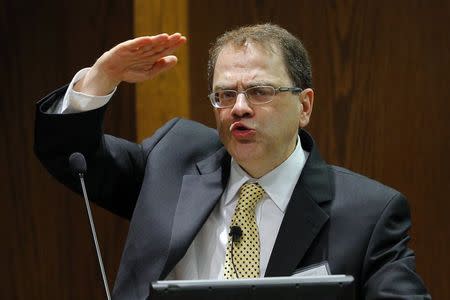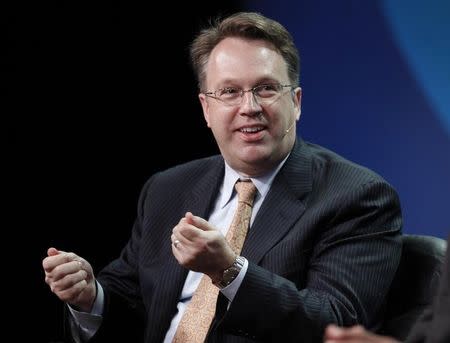Fed officials put financial stability concerns on front burner
By Richard Valdmanis and Ann Saphir BOSTON/SAN FRANCISCO (Reuters) - A pair of Federal Reserve officials on Wednesday warned that raising U.S. interest rates to fend off bubbles and other troubling signs of financial market unrest could undercut the Fed's efforts to put the U.S. economy on a sounder footing. But they embraced broadly different approaches to address the possibility that, as policymakers from Fed Chair Janet Yellen on down have said, extremely loose monetary policy may be encouraging businesses and households to take risks that set the financial system up for another crash. San Francisco Fed President John Williams touted alternative ways to use monetary policy to shore up the financial system's ability to withstand shocks. These included so-called nominal income targeting aimed at keeping incomes growing steadily so families will be in a better position to avoid bankruptcy or foreclosure. To Williams, such alternative approaches can boost stability without derailing the Fed from its main goals of low inflation and high employment. Minneapolis Fed President Narayana Kocherlakota, for his part, counseled a measure of tolerance for increasing financial stability risks, painting those risks as an unwanted, but unavoidable, side effect of the low rates the economy will need for years to claw its way back to normal. "For a considerable period of time, the (Fed) may only be able to achieve its macroeconomic objectives in association with signs of instability in financial markets," he said, advocating low real interest rates for another five years, far longer than most of his colleagues. The speeches, for all their differences, highlight the degree to which concerns about the financial system's vulnerability to shocks has penetrated the deliberations and mindset of Fed officials. Prior to the crisis, they rarely included financial stability concerns in their calculus for monetary policy. The recent departure from the Fed Board of Jeremy Stein, who had become the Fed's most vocal advocate of using tighter monetary policy to reduce risks to financial stability, had raised concern among some observers that the Fed would lose its focus on incorporating financial stability concerns into monetary policy making. (Writing by Ann Saphir; Editing by Chizu Nomiyama)



